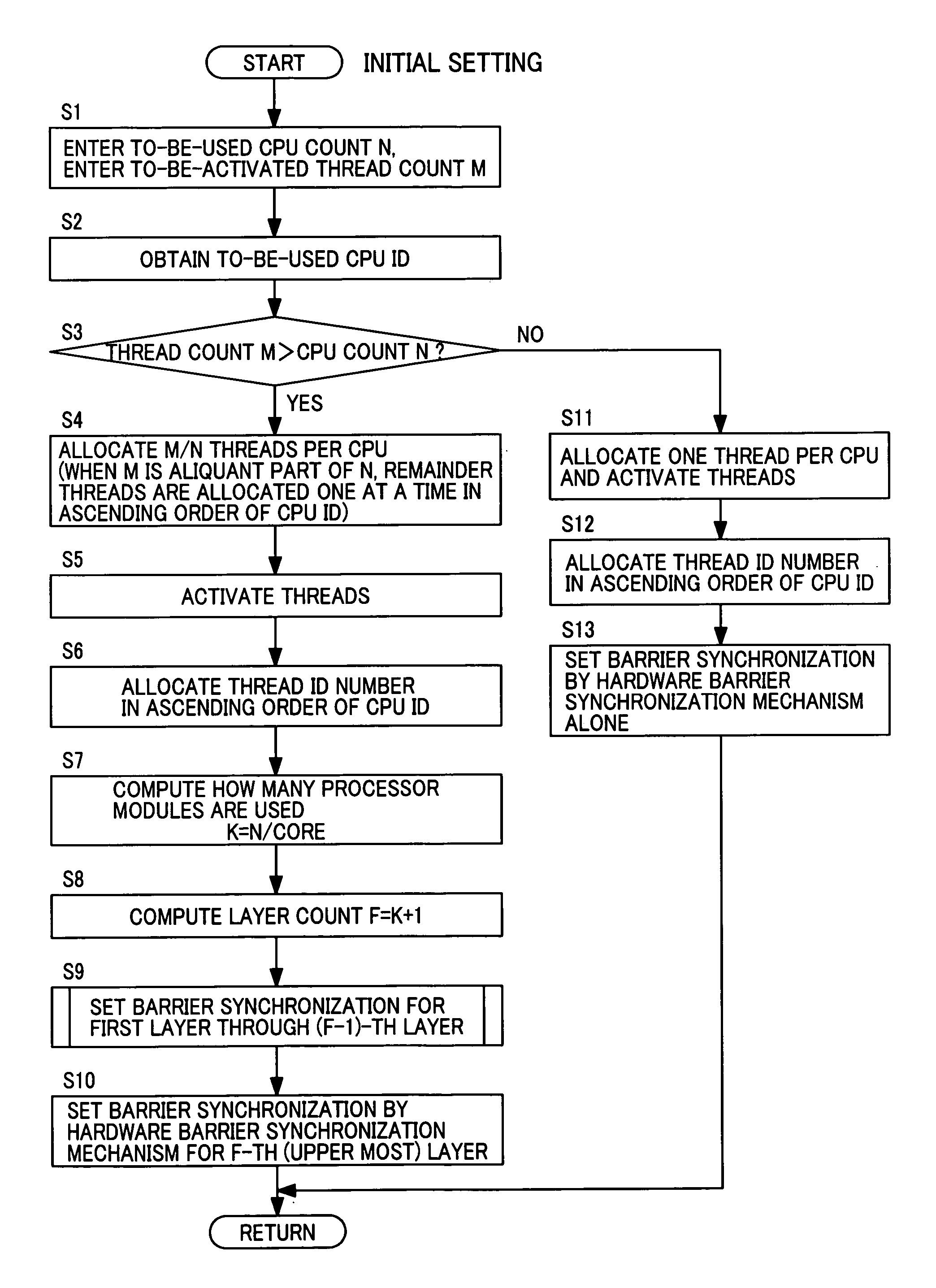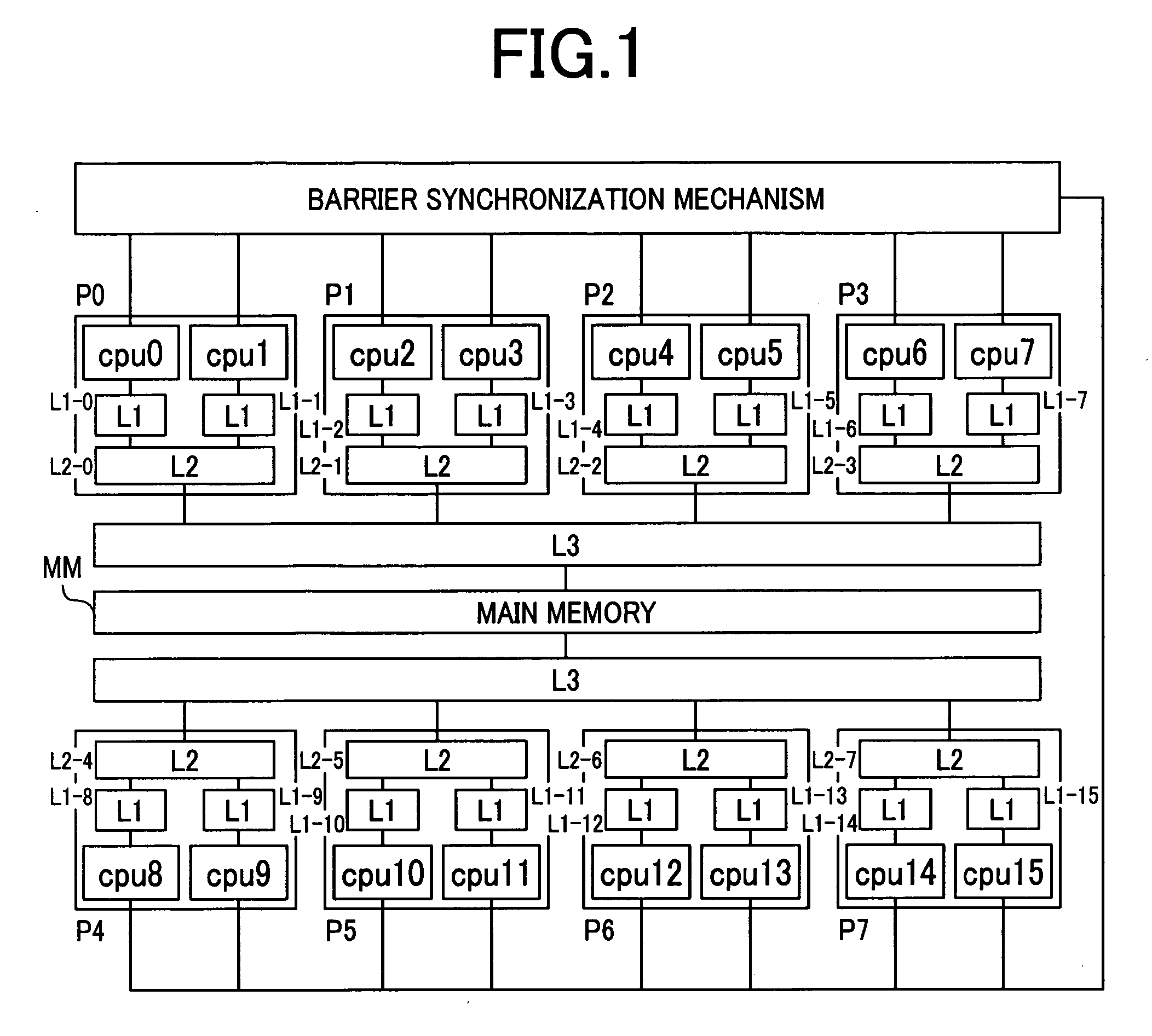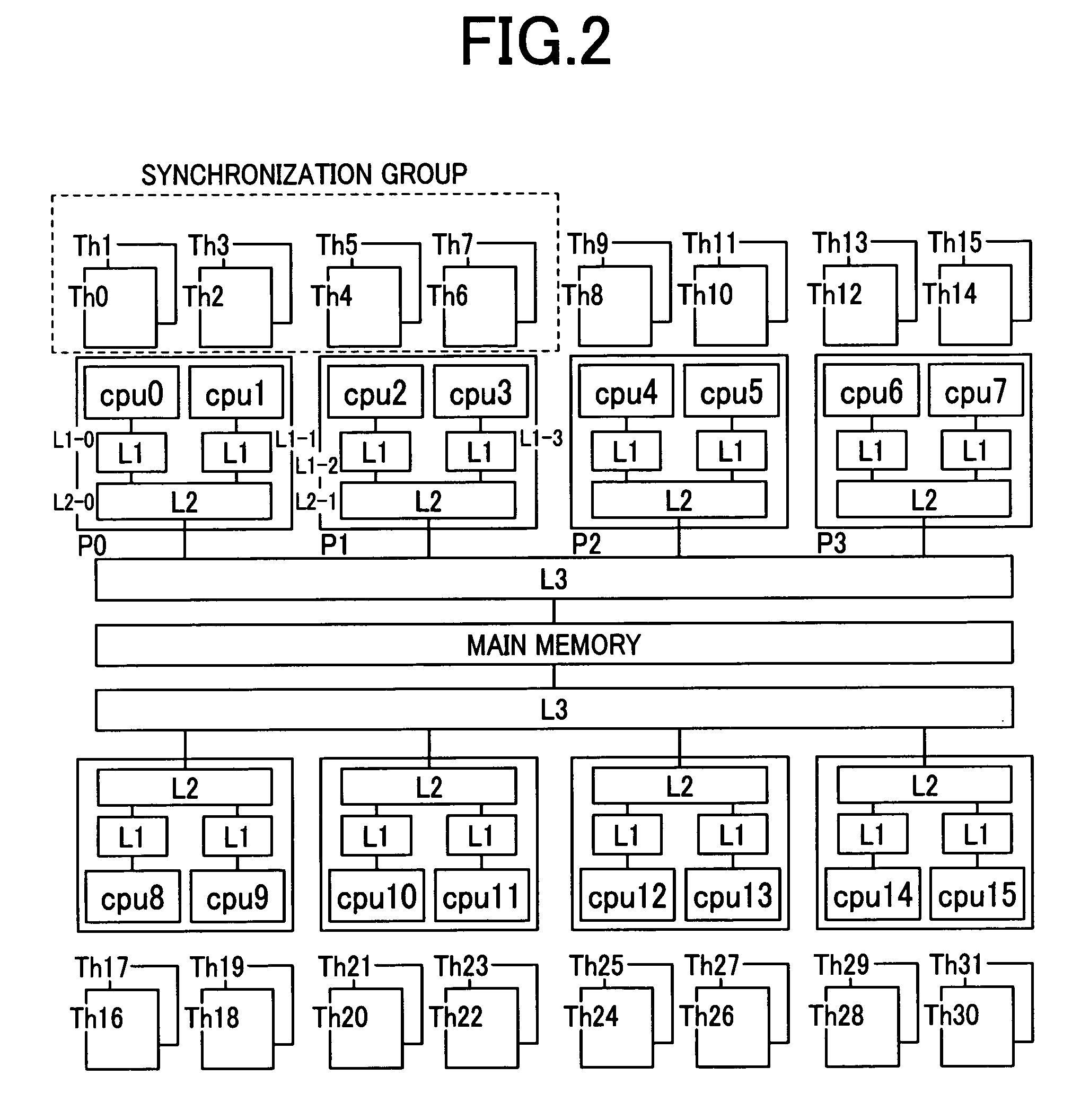Synchronization method and program for a parallel computer
a parallel computer and synchronization method technology, applied in the direction of program control, multi-programming arrangements, instruments, etc., can solve the problems complicating the hardware configuration, and pushing up the price of parallel computers. to achieve the effect of lowering the efficiency of parallel processing
- Summary
- Abstract
- Description
- Claims
- Application Information
AI Technical Summary
Benefits of technology
Problems solved by technology
Method used
Image
Examples
first embodiment
[0039]FIG. 1 shows an example of constructing a parallel computer from a shared memory multiprocessor system with a multicore microprocessor to which a first embodiment of this invention is applied.
[0040]
[0041] A parallel computer of FIG. 1 has a multiprocessor composed of plural processor modules (processors) P0 to P7. Plural processor cores (cpu0 to cpu15 of FIG. 1) are mounted to each of the processor modules P0 to P7. Two processor cores are mounted to the processor module P0. The processor module P0 has, for example, the processor cores cpu0 and cpu1, and is capable of running two CPUs in parallel.
[0042] The processor cores cpu0 and cpu1 have primary cache memories (hereinafter referred to as primary caches) L1-0 and L1-1, respectively, which are independent of each other. The primary caches L1-0 and L1-1 of the two processor cores cpu0 and cpu1 are connected to one secondary cache memory (hereinafter referred to as secondary cache) L2-0 provided in the processor module P0. T...
second embodiment
[0161] FIGS. 15 to 20 illustrate a second embodiment of this invention in which software alone is used in barrier synchronization without the help of the hardware barrier synchronization mechanism 100 shown in the first embodiment.
[0162]FIG. 15 shows the hardware configuration of a parallel computer according to the second embodiment. The parallel computer of this embodiment is obtained by removing the hardware barrier synchronization mechanism 100 from the parallel computer of the first embodiment shown in FIG. 1, and the rest of the configuration is the same as in the first embodiment.
[0163]FIG. 16 shows an example of the synchronization group Gr. FIG. 16 is similar to FIG. 4 referred to in the first embodiment in that the drawing shows details of the synchronization group Gr for when four processor cores cpu0 to cpu3 are assigned eight threads Th0 to Th7 to receive barrier synchronization.
[0164] The first layer, which is the lowermost layer of the synchronization group Gr, mak...
third embodiment
[0212]FIGS. 22 and 23 show a third embodiment in which the barrier synchronization processing described in the first embodiment is carried out by dedicated threads while other threads are dedicated to parallel computation processing. The rest of the configuration of the third embodiment is the same as the first embodiment.
[0213] The processor cores cpu0 to cpu3 are assigned and execute threads Th0 to Th7, which perform computation processing alone and function as child threads, and synchronization threads Sth0 to Sth3, which function as parent threads in each layer and perform barrier synchronization processing alone. The synchronization threads Sth0 to Sth3 execute only the barrier synchronization processing in the computation processing PG2 of the program PG shown in FIG. 6. The computation threads Th0 to Th7 execute computation processing (parallel computation processing) of the program PG and only a part of barrier synchronization processing.
[0214] The computation threads Th0 ...
PUM
 Login to View More
Login to View More Abstract
Description
Claims
Application Information
 Login to View More
Login to View More - R&D
- Intellectual Property
- Life Sciences
- Materials
- Tech Scout
- Unparalleled Data Quality
- Higher Quality Content
- 60% Fewer Hallucinations
Browse by: Latest US Patents, China's latest patents, Technical Efficacy Thesaurus, Application Domain, Technology Topic, Popular Technical Reports.
© 2025 PatSnap. All rights reserved.Legal|Privacy policy|Modern Slavery Act Transparency Statement|Sitemap|About US| Contact US: help@patsnap.com



